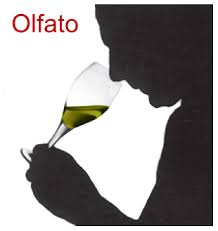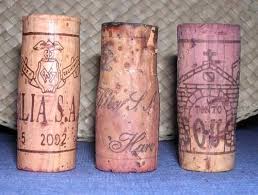This post is also available in: Spanish
How to know if a wine is chopped and is in poor condition. It is not always appreciated quickly if a wine is chopped, or is in poor condition.
We say that a wine is chopped when its smell and taste are not adequate.
Chopping a wine is very common and we should not be alarmed. Chopping is caused by bacteria, acetic bacteria.
This bacterium needs oxygen to be able to live, which tells us that if a wine is chopped it is because air enters the bottle. Normally it is usually because the plug is in poor condition and has let air through.

How to know if a wine is chopped and is in poor condition
If we are not wine experts, we can not identify at a glance if a wine is good or bad. Let’s see some considerations.
How the picado is produced
The chopped wine is produced by the contact of oxygen with alcohol, which gives rise to acetic bacteria, and the sum of the three elements, produce acetic acid
Oxygen + alcohol + bacteria = acetic acid
Bacteria in contact with oxygen slowly oxidize the wine’s alcohol, which is transformed into acetic acid and ethyl acetate.
This ethyl acetate is what gives the characteristic vinegar smell.
Therefore, avoiding the contact of the wine with the air, we will avoid to a great extent that the wine spoils.
Today the techniques of winemaking and conservation, and the proper use of sulfites, prevent the creation of these microorganisms.
The wines with traces of sugar, with little alcohol or short of acidity are the most propitious for the creation of the acetic bacteria.
How we detect a bad wine
The most common is to detect it by smell and taste. If when tasting a wine it smells bad and tastes of vinegar, the wine is in poor condition, and therefore should not be consumed.
A wine in poor condition should be rejected and you should never drink.
Sometimes the wine is not at all bad, or its degree of oxidation has not yet reached its highest point, and therefore its smell and taste are not very accentuated vinegar.
In these cases it is best to wait a while before consuming it definitively and see how the wine evolves (sight, nose and mouth).
Alerts to detect a bad wine
We have already seen how the smell and taste of wine can warn us of the state level it has.
In addition, there are a series of alerts or signals that can indicate us before tasting the wine if it is in poor condition. These signs are:
bulging capsules: it indicates that there is air between the capsule and the cork.
Outgoing cap: the cap is slightly protruding and presses the capsule.
The level of wine in the bottle is clearly lower than usual.
Posos in wine
Unsuitable color
The time elapsed since bottling: in young wines over five years.
Temperature of the bottle: an excess of temperature, should alert us.
Consequences of consuming a wine in poor condition
First of all, we should not be alarmed to have consumed a wine in poor condition. Nothing happens, since what we are ingesting is vinegar, and this is not toxic unless we consume large quantities.
However, for greater peace of mind we can go to the nearest pharmacy and get an antacid stomach, for greater peace of mind.
Other factors that originate it. How to know if a wine is chopped and is in poor condition

Cork may be another factor that causes the chopping of a wine.
It is the so-called “cork odor”. In this case we are going to detect it because the wine presents in its bottle remains of cork, and upon opening it we perceive a smell of mold.
The smell is unmistakable since it has a characteristic smell of wet cardboard.
How to take advantage of a bad wine
A wine in poor condition should not necessarily be eliminated. Here we leave some applications of a wine in poor condition:
1.-Wash fruits and vegetables: alcohol dissolves impurities and kills some types of pathogens such as salmonella.
2.- Facial mask: the antioxidant power of the wine, provides benefits to the skin when applied directly.
3.-Clean grease stains: especially oil on the garage floor.
4.- Cure bruises: the wine is rich in flavonoids, a natural antioxidant that has an anti-inflammatory effect on the body.
5.- Clean glass: a wine in poor condition is almost vinegar, and it perfectly cleans the glass and mirrors.
6.- Cooking: add the wine to any stew, to enhance the flavor of the cooked.
7.- Make vinegar: leaving the bottle open at room temperature between 2 and 3 weeks, it will become vinegar.
How to fix a wine in poor condition
Not always a wine in poor condition can be brought back. There are some homemade ways to fix a wine in the initial state of oxidation.
1.- If the cork has a wet and a dry part, possibly carrying out a change of container several times and aerating it, we will quickly get rid of the odor and the vinegary flavor.
2.-When the wine in bad condition is due to the cork, we see pieces of cork in the liquid, usually due to the TCA (trichloroanisol), a substance that adheres to the plastics with ease.
In these cases with putting a piece of kitchen film in the bottle and putting it in contact with the wine, we will solve the problem to a great extent.